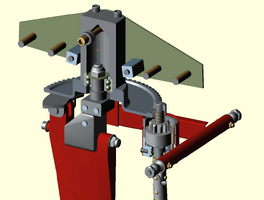Mcmanus
Newbie
Good morning everyone, I'm Fabio, a helicopter pilot, I recently arrived on this forum and as already written when I introduced myself, I found the level of preparation of the people who animate the forum to be remarkable. With gyroplanes I have a lot to learn, both in the practical part and not least in the theoretical and aerodynamic part included. At the base where I go to fly they have an authorized workshop for maintenance both for their own machines and for private too and I often happened to witness them doing @TRACKING on the rotor blades, in particular I'm talking about the MD 500 and HS 300, where the blades are equipped with TRIM TABS. Now my question is the following: how is Tracking carried out on a gyroplane? considering that it flies in self-rotation and the relative wind hits the rotor from below..., which instruments are used? and last but not least, how often does this type of intervention on a gyrocopter require? PS: I hope I haven't asked a question regarding a topic that has already been discussed but which I wasn't able to find on the Forum. I defer to the Staff in case they want to move the discussion to the appropriate section or whatever. Thank you. Fabio - Monza. IT. GMT 07.41
Last edited:

